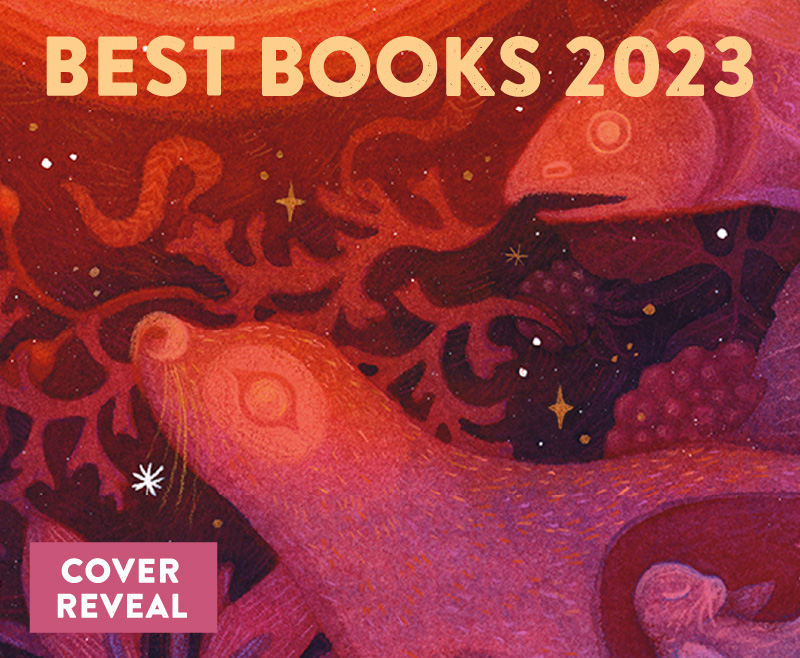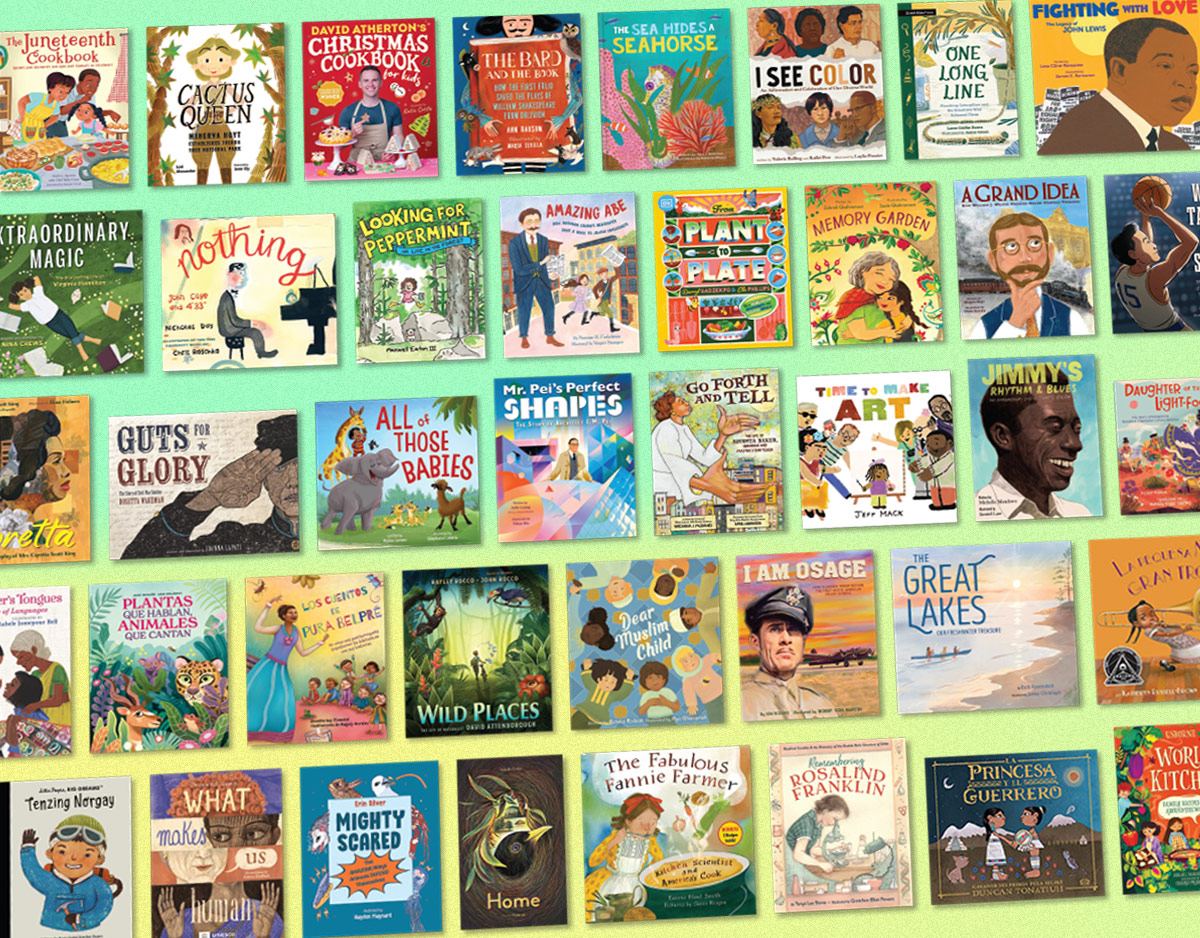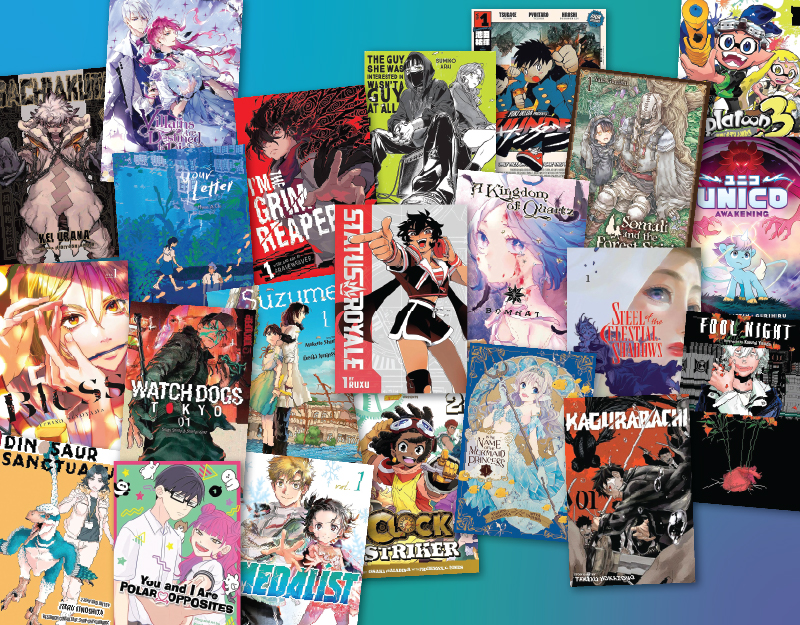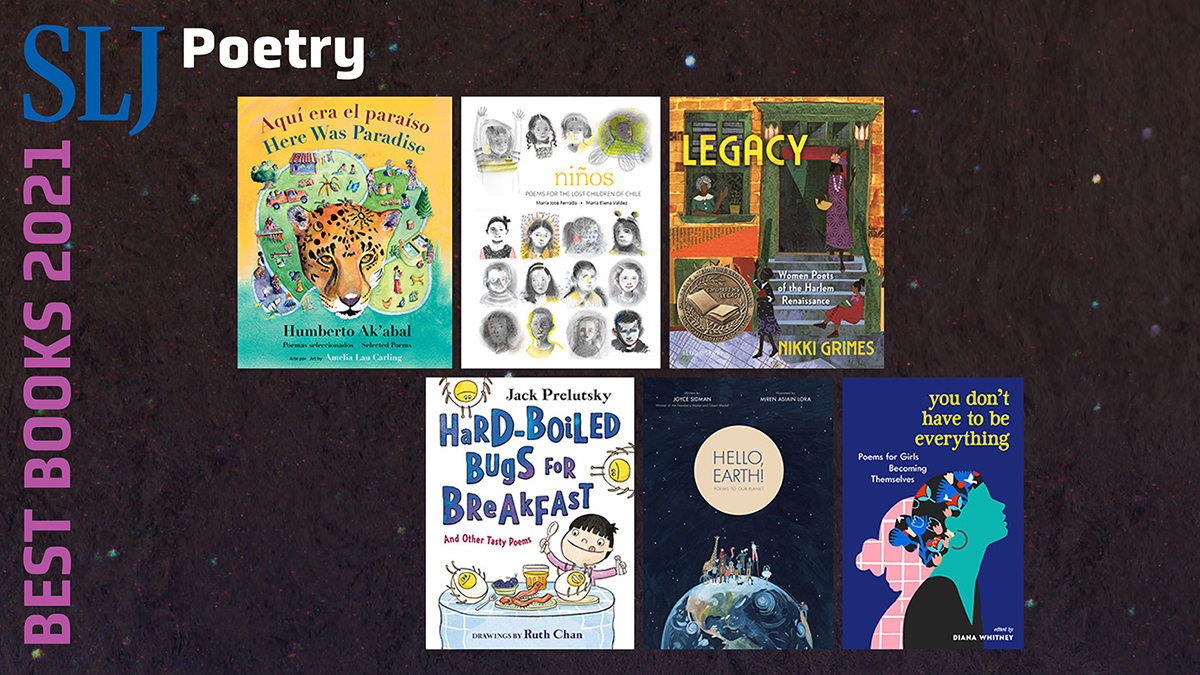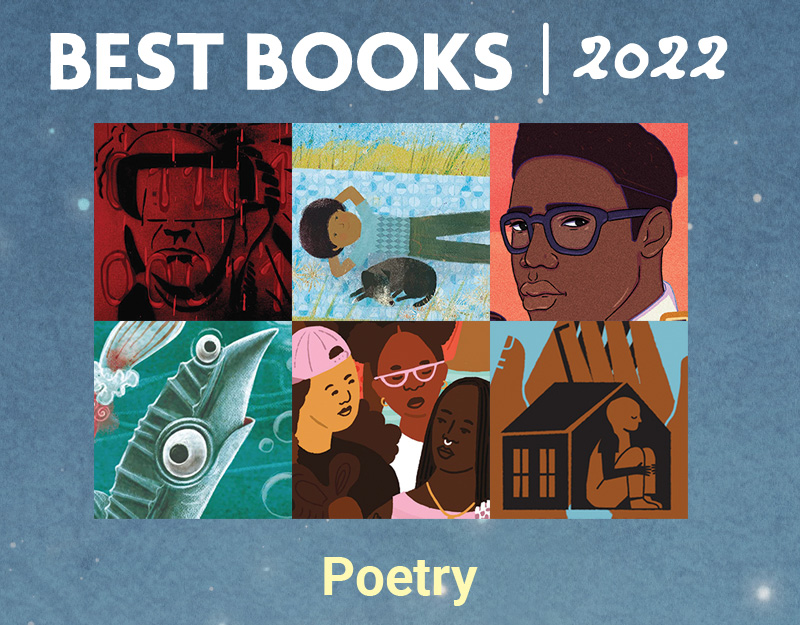Greet the New School Year with Familiar Characters
To continue celebrating the new school year, treat your students with humorous twists on these familiar characters and beloved series books.

The Pigeon HAS to Go to School
Written and illustrated by Mo Willems
Published by Hyperion, 2019
ISBN #978-136804645-9
Grades PreK and up
In this latest installment of the award-winning Pigeon series, our intrepid, feathered friend returns with a new set of explanations, arguments, excuses, and protests concerning an everyday childhood experience. This time, Pigeon negotiates the fact that it has to go to school, voicing its objections right from the start on the front cover: “Come ON!” Willems sticks to the tried-and-true structure of the other Pigeon books, beginning with the Pigeon’s initial complaint, then progressing gradually through sweet talk, appeals to emotion, panicked outbursts, and an eventual realization that even if those approaches don’t hold any sway, a new perspective on the matter can lead to unexpected acceptance and satisfaction with the matter at hand. In this case, Willems pays homage to Don’t Let the Pigeon Drive the Bus!, the book that started it all, as the arrival of a school bus drastically changes Pigeon’s outlook at the end. Full of sight words, high frequency words, predictable patterns, and laugh-out-loud humor, this book is a welcome addition to a treasured early reader picturebook series.

Harold & Hog Pretend for Real!
Written and illustrated by Dan Santat
Published by Hyperion, 2019
ISBN #978-136802716-8
Grades PreK and up
When Mo Willems’ equally adored early reader series, Elephant & Piggie, ended in 2016, it wasn’t a goodbye, but a warm transition to the Elephant & Piggie Like Reading! series, in which the much loved characters celebrate the work of other children’s authors and illustrators. This time, they sing the praises of another elephant and pig duo, Harold and Hog, created by Caldecott-winner, Dan Santat. Breaking the metafictive wall that separates the peritextual pages from the main story, Harold and Hog push over the title page, catch a glimpse of Gerald and Piggie, and reciprocate the excitement, exclaiming, “Wow. Did you see that?!” “It is them–for real!” And so, Harold and Hog begin some dramatic play, dressing up as the other two animals, and pretending to be them. What they soon realize is that the physical similarities to their animal counterparts is all they share in common. A touching exploration of self-discovery and acceptance, as well as a sweet tribute to Willems’ iconic characters, Harold & Hog Pretend for Real! belongs on every classroom shelf where Elephant & Piggie resides as well.
ADVERTISEMENT
ADVERTISEMENT
Teaching Ideas and Invitations
Grades PreK and up
Breaking Down Series Books. For emergent and early readers, series books offer a sense of control while reading, especially through the use of familiar characters and text structures. Share a number of titles from the Pigeon series, the Elephant & Piggie series, or the Elephant & Piggie Like Reading! series with your students. Have them work in small groups to determine patterns across the different titles within a series. How are the characters always similar from one book to another? What other characters typically appear in the books? What kinds of statements do the characters typically say? How do the stories usually go (i.e., What usually happens first, in the middle, and at the end?)? What kinds of illustrations can they expect to find in the book, on the cover, and on the end pages? Once students have discussed their findings with you, invite them to create their own Pigeon, Elephant & Piggie, or Elephant & Piggie Like Reading! book, adhering to the same patterns they identified in the rest of the series. You can photocopy and cut out the characters in the books, so students can use them to draft their stories, or you can use the websites posted below in Further Explorations that teach students to draw the Pigeon, Piggie, or Gerald. Remember that students can create their own characters, too, if they are creating a book for the Elephant & Piggie Like Reading! series.
Humor in Storytelling. These stories, along with the others in their respective series, engage readers with a rich infusion of humor. What do the authors and/or illustrators do to make the story funny? Where does the humor in the plot occur? Guide students to analyze what elements contribute to each book’s humor. Is it the topic or situation that the characters are in? The word choice? The illustrations? The captions or dialogue? A combination of elements? Once your students have discussed this and looked at enough examples, encourage them to try writing their own humorous stories–or have them revise a story they’ve already written–making sure to apply elements of humor they identified from the inquiry they conducted. You may want to have students do this in partnerships or as shared writing. Invite students to share their stories aloud with the class.
Dealing with Anxiety. The topic of anxiety is explored in many books for children and is particularly personified in the characters of Pigeon, Gerald (Elephant), and Hog. Consider the following questions yourself: How does childhood anxiety show up in what these characters say, do, think, and feel? How does the anxiety affect what happens in the story? What is the source of the anxiety? What do other characters do in response to the character’s anxiety? What strategies help? Which ones complicate the matter further? What does the character do to address and alleviate his or her own anxiety? As you read these books with your students, help them name and unpack the term anxiety, and share with them that adults experience anxiety, too. Collaborate with your school’s guidance counselor, psychologist, and/or social worker to plan ways to discuss childhood anxiety with your students, as well as to identify and practice strategies your students can implement to address it. Other picture books you may want to share with students include Jack’s Worry, by Sam Zuppardi; What to Do With a Problem?, by Kevin Yamada; Small Things, by Mel Tregonning; and All Birds Have Anxiety, by Kathy Hoopman.
Perceptions of School. The concept of school is a popular focus in children’s literature. Just as the purpose, structure, and realities of school have evolved over time, so has the portrayal of school changed in children’s books. What does Pigeon understand school to be at the beginning of the book and at the end? How does that align with contemporary or outdated notions in real life? With the help of your school or local librarian, gather a text set of books that center the concept of school. Some titles you might gather include Rain School, by James Rumford; Frank and Lucy Get Schooled, by Lynne Rae Perkins; Steamboat School, by Deborah Hopkinson; and Dear Substitute, by Liz Garton Scanlon and Audrey Vernick; School’s First Day of School, by Adam Rex; The Day You Begin, by Jacqueline Woodson; and First Day Jitters, by Julie Danneberg; Midnight Teacher, by Janet Halfmann; and If I Built a School, by Chris Van Dusen. Share these titles with your students, and then engage them in discussion around the following questions: How is the school portrayed in each book? What patterns do students notice? What stereotypes? How do the students respond to the idea of school? Are those descriptions and responses realistic? What would your students do in similar situations? How might they challenge some of those stereotypes? What stories might your students write about school that made a difference in their lives? After discussion, invite students to write or draw about their ideal school.
Reader’s Theater. Told solely through character dialogue, each of these books are fantastic for use in reader’s theater activities. Additionally, the text does not indicate how the dialogue is said, nor does it provide any dialogue tags (i.e., “said,” “replied,””asked,” etc.), which makes determining what kind of sentence each is and how it should be read aloud a worthwhile exercise for students as they prepare their reader’s theater performance. Have your students practice reading the story aloud in small groups and then perform a reader’s theater version of it in with different intonation, speed, and volume to hear all the ways it can be read aloud fluently. A version of this Teaching Invitation originally appeared in our entry for Nino Wrestles the World.
Mo Willems Author-Illustrator Study. Mo Willems’ works are a favorite in many classrooms among both students and teachers. Gather a collection of his work and biographical information, including interviews. Read through his books as a class, noting similarities and differences across the books’ formats and styles. Take a close look at his writing techniques, noting his word choices and use of figurative language. Ask your students to identify patterns in setting, theme, character, and plot across the books. Examine Willems’ storytelling techniques, as well as the topics and perspectives he writes about in her books. Compile a list of “writing lessons” gained from this author study, and invite your students to try out some of the writing techniques you have discussed in their own writing. Have them do the same with Willems’ illustrations. What styles, media, and techniques does he employ? What themes or symbols do they see across his illustrations? Gather information from the websites listed below, your school or local librarian, the Internet, and as other biographical sources.
Critical Literacy
Stereotypes in Series Books. Harold and Hog Pretend for Real! emphasizes that just because two people or characters appear physically similar, that doesn’t mean they think, feel, or behave the same. At the same time, many series books continue to perpetuate stereotypes about different populations of people. Invite students to engage in an inquiry about the series books in the classroom and the school library. What kinds of characters do they notice appear most in the series? Have students compare and contrast how the characters are portrayed. What do they notice about their descriptions and illustrations? Their plotlines? What patterns do they see regarding how similar looking characters think, feel, and behave? How do those patterns correspond with or challenge what they know about those populations in the real world? For example, some series that have been critiqued for stereotypical representations of populations include Tin Tin, Little House and Alvin Ho for their portrayal of Native Americans, Skippyjon Jones for its portrayal of the Spanish language, and many books by Dr. Seuss for their depiction of Asian, Middle Eastern, African, and Eastern European cultures. Invite students to write to the school principal, curriculum adminstrator, and school board about these issues, advocating instead for adding new series and titles that celebrate the mosaic of human diversity.
Further Explorations
Online Resources
Mo Willems’ website
Dan Santat’s website
“How to Draw Piggie”
http://pigeonpresents.com/vid-e-mos/how-to-draw-piggie/ – Pigeon Presents
https://www.artforkidshub.com/draw-piggie/ – Art for Kids Hub
“How to Draw Gerald”
https://www.artforkidshub.com/draw-gerald/ – Art for Kids Hub
“Let’s Draw the Pigeon”
https://www.nccil.org/visit/art-activities/lets-draw-the-pigeon – National Center for Children’s Illustrated Literature
Books
Danneberg, J. (2000). First day jitters. Ill. by J. Love. Watertown, MA: Charlesbridge Publishers.
Halfmann, J. (2018). Midnight teacher: Lilly Ann Granderson and her secret school. Ill. by L. Ladd. New York: Lee & Low Books.
Hoopman, K. (2017). All birds have anxiety. Philadelphia, PA: Jessica Kinglsey Publishers.
Hopkinson, D. (2016). Steamboat school. Ill. by R. Husband. New York: Disney/ Hyperion.
Jackson, E. (2003). It’s back to school we go! First day stories from around the world. Ill. by J. D. Ellis. Minneapolis, MN: Millbrook Press.
Perkins, L. R. (2016). Frank and Lucky get schooled. New York: Greenwillow Books.
Rex, A. (2016). School’s first day of school. Ill. by C. Robinson. New York: Roaring Brook Press.
Rumford, J. (2010). Rain school. Boston: Houghton Mifflin.
Rurrs, M. (2009). My school in the rain forest: How children attend school around the world. Honesdale, PA: Boyds Mill Press.
Scanlon, L. G., & Vernick, A. (2018). Dear substitute. Ill. by C. Raschka. New York: Hyperion.
Tregonning, M. (2018). Small things. Pajama Press.
Van Dusen, C. (2019). If I built a school. New York: Dial.
Winter, J. (2009). Nasreen’s secret school. New York: Beach Lane Books.
Woodson, J. (2018). The day you begin. Ill. by R. Lopez. New York: Nancy Paulsen Books.
Yamada, K. (2016). What to do with a problem? Seattle, WA: Compendium.
Zuppardi, S. (2016). Jack’s worry. Somerville, MA: Candlewick Press.
Filed under: Beginner Readers, Fiction, Fiction Picture Books
About Grace Enriquez
Grace is an associate professor of language and literacy at Lesley University. A former English Language Arts teacher, reading specialist, and literacy consultant, she teaches and writes about children’s literature, critical literacies, and literacies and embodiment. Grace is co-author of The Reading Turn-Around and co-editor of Literacies, Learning, and the Body.
ADVERTISEMENT
ADVERTISEMENT
SLJ Blog Network
One Star Review, Guess Who? (#211)
Free Piano (Not Haunted): A Cover Reveal and Q&A with Whitney Gardner
Kevin McCloskey on ‘Lefty’ | Review and Drawn Response
Notable NON-Newbery Winners: Waiting for Gold?
The Seven Bills That Will Safeguard the Future of School Librarianship
Take Five: Newbery Picks, Part Two
Gayle Forman Visits The Yarn!
ADVERTISEMENT



